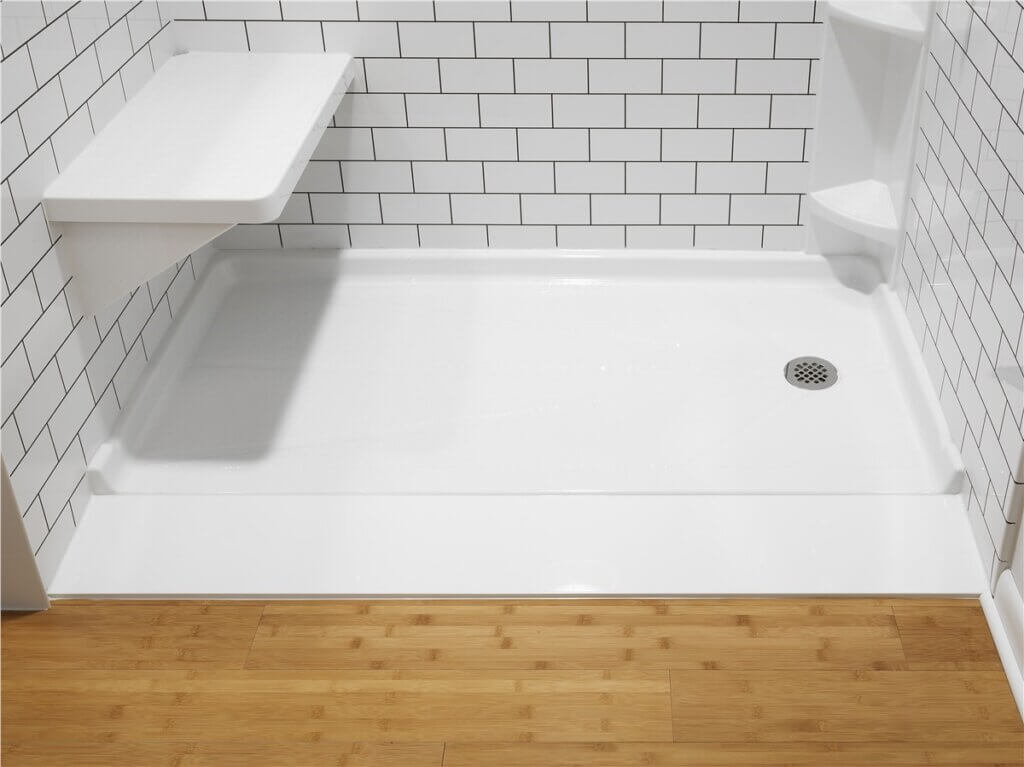No-Threshold Shower Ideas for a Barrier-Free Bath

Designing a barrier-free bathroom starts with the shower floor. A no-threshold shower—sometimes called a zero-entry or curbless shower—erases the step that traditionally separates wet and dry zones, creating a continuous plane that is attractive, highly accessible, and easy to clean.
Whether you are future-proofing for aging in place with a tub-to-shower conversion, accommodating a family member who uses mobility aids, or simply chasing a sleek modern aesthetic, the following guide explores practical ideas, material choices, safety considerations, and layout tips that take a concept many pros reserve for luxury spas and make it realistic for any home.
Know the Threshold Spectrum
Most remodelers talk about three levels of shower entry:
- Full curb (four inches or higher)
- Low threshold shower (one- to two-inch lip)
- Shower without threshold (zero change in floor height)
Moving from a traditional curb to even a modest one-inch lip removes a tripping hazard and streamlines wheelchair transfers; removing the curb entirely turns the shower zone into an extension of the bathroom floor.
Get the Slope and Drainage Right
A smooth transition demands water control beneath the surface. Installers typically recess the subfloor slightly, then pitch the mortar bed at a quarter-inch per foot toward a linear drain. Linear drains run side-to-side along the rear or entry wall so the main field tile can slope in one direction rather than to a central point. This straightforward plane keeps larger format tiles level and eliminates awkward pie-shaped cuts common with four-way center drains.
Shower doors become optional when slope and drain placement work in tandem. Frameless glass, half-height splash panels, and even open “wet rooms” make sense once water reliably stays in the designated zone.
Choose the Right Pan System
Bathroom remodelers typically pick from three solutions:
- Factory-molded acrylic pan with integrated slope
- Guarantees waterproofing and proper pitch.
- Available in zero-curb or low threshold formats.
- Installs in a single day and pairs with matching wall panels.
- Tile-ready foam pan
- Pre-sloped polystyrene accepts thinset and tile directly.
- Lightweight—ideal for second-story bathrooms.
- On-site trimming allows creative shapes and benches.
- Custom mortar bed
- Unlimited sizing for irregular footprints.
- Supports river rock, porcelain planks, or sculptural mosaics.
- Demands experienced tile setters to prevent puddling.
Rethink Curb Design When You Must Use One
Some homes may have structural restrictions that block full recessing. In those cases, a tile curb for shower entry kept to one inch blends nearly flush once the final floor tile or luxury vinyl plank is installed throughout the rest of the room. Sloping the top of that tiny curb toward the drain adds a second defense against pooled water and earns significant credit in real-estate listings that highlight easy-access features.
Pair Seating With Open Floors
Because the shower floor now flows uninterrupted, seating options matter more than ever. A fold-down teak seat mounted on blocking inside the wall leaves floor space open for standing users yet drops into position for a safe perch when someone needs stability. For larger enclosures, a built-in corner bench can tuck neatly behind the spray zone without shrinking the turning radius required for walkers or wheelchairs.

Surfacing Choices That Work Hard and Look Great
- Large-format porcelain creates a seamless feel when color-matched to wall planks.
- Textured matte tiles boost traction without looking institutional.
- Solid-surface slabs eliminate grout lines entirely—great for homeowners who dread scrubbing.
- Quartz or recycled glass slabs at the perimeter add contrast and clearly define the wet area without a raised curb.
No matter the material, verify the coefficient of friction (COF) is rated for wet floors, and specify epoxy or urethane grout for mold resistance.
Glass, Partial Glass, or No Glass?
A shower without threshold can be enclosed, partially enclosed, or completely open depending on splash radius and user preference:
- Full-height frameless glass locks in warmth and directs steam upward.
- A single fixed panel on the splash side allows a wheelchair to roll straight under the spray while blocking mist from vanity cabinets.
- Wet-room layouts skip panels altogether when the room width exceeds six feet and the shower head angles toward the back wall.
Plan for Future Maintenance
Zero-step entries reduce glass streaks and curb grime but amplify the importance of flawless waterproofing. Insist on a continuous liquid-applied membrane behind all tile and a high-grade silicone joint where walls meet floors. Annual checks around drains and any fixed glass anchors catch sealant fatigue early.
For acrylic or solid-surface pans, follow manufacturer guidelines: pH-neutral cleaners, soft sponges, and no abrasive powders. Proper care keeps finishes glossy and slip resistant for decades.
Working With Pacific Bath
Our certified installers specialize in low and no threshold solutions backed by industry-leading warranties. A design consultant measures floor elevations with laser levels, reviews drain routing, and discusses lifestyle priorities—whether that means future wheelchair use, quick cleanups, or spa ambience. Because we fabricate many components off-site, most projects wrap up in a single workweek, minimizing household disruption.
A barrier-free shower installation is more than an accessibility upgrade; it is an investment in comfort, resale value, and daily peace of mind. Ready to explore a custom no threshold shower for your home? Contact Pacific Bath for a free consultation, and take the first step toward a smoother start every morning.


